Inverted asanas can often seem difficult to accomplish, dangerous or just scary. If practiced safely and to the correct level for your ability and experience, inverted asanas can be rejuvenating and stimulating for the body and mind.
Inverted asanas reverse the action gravity has on blood flow. Blood flow to the brain is increased, improving general health and well being, concentration and self-confidence. Practicing inverted asanas also slows the heart and breathing rate, inducing a sense of calm. View the world from a different perspective and move out of your normal routine.
Inverted asanas fall into 3 categories:
Semi-inverted, where the torso and the head are horizontal and the feet are raised above the head.
Start lying in foetus position with sitting bones close to the wall. Roll onto your back with feet and buttocks close to the wall. Allow the torso to relax into the floor and slowly open the legs as wide as comfortable. Palms of the hands facing the ceiling. Relax with a slow relaxed breath. Hold for 5-10 long breaths.
Adho Mukka Svanasana – As an inverted asana it increases blood flow to the brain and gives the heart a rest as well as lengthening hamstrings, calfs, shoulders and chest.
Start in a kneeling position. Knees hip width apart. Fingers spread, middle finger pointing away from you. Push through the hands and lift sitting bones to the ceiling. Straighten the legs, but try to maintain length in the spine. If the hamstrings are tight, keep the knees bent. Hold for 5-10 long breaths.
Start in a kneeling position. Knees hip width apart. Fingers spread, middle finger pointing away from you. Push through the hands and lift sitting bones to the ceiling. Straighten the legs, but try to maintain length in the spine. If the hamstrings are tight, keep the knees bent. Hold for 5-10 long breaths.
Fully inverted
Start in a lying position. Push through your hands and bring your knees to chest. Try to do this by using the abdominal muscles to tilt and lift the pelvis. Roll through the lower back to lift from the floor. Move your hands to the lower back for support. Keep knees together and start to raise your legs.
THE WEIGHT SHOULD ALWAYS BE RESTING ON THE SHOULDER BLADES NOT THE NECK. Bring elbow together and gradually move your hands closer to your shoulder blades. Relax the feet. Increase length of hold starting with 5-10 breath. Focus on the throat (Vishuddhi chakra) throughout.
Sarvangasana – raise legs to a vertical position. Feet should be in line with the shoulders.
As above, but fully extending position into full shoulder stand.
People who suffer from the following conditions should not practice inverted asanas: heart condition, high blood pressure, back or neck injuries (especially disc problems), glaucoma or ear infection. Women should not practice inverted asanas if they are pregnant or during menstruation. It is always advisable to first practice inverted asanas under the supervision of an experienced teacher.
